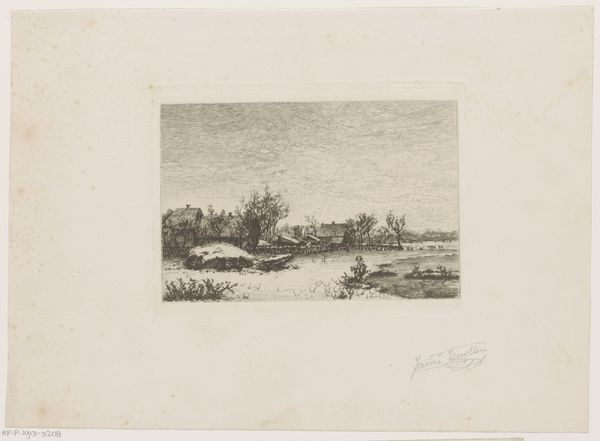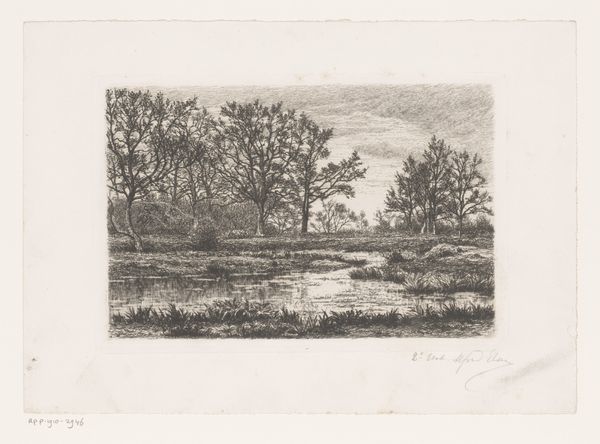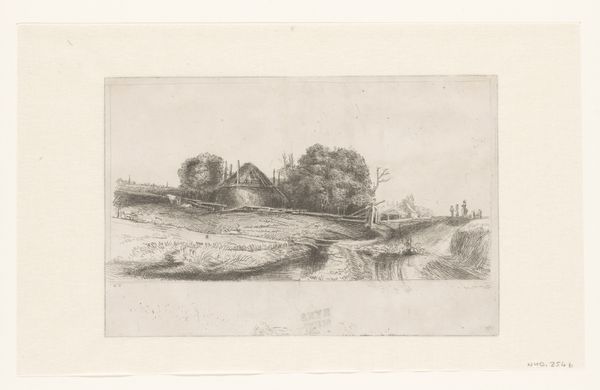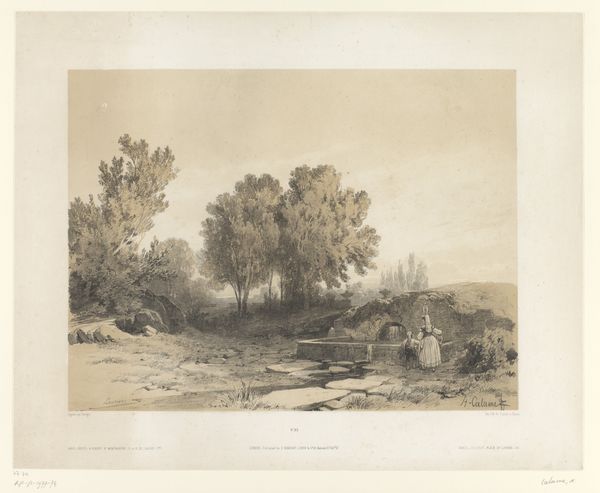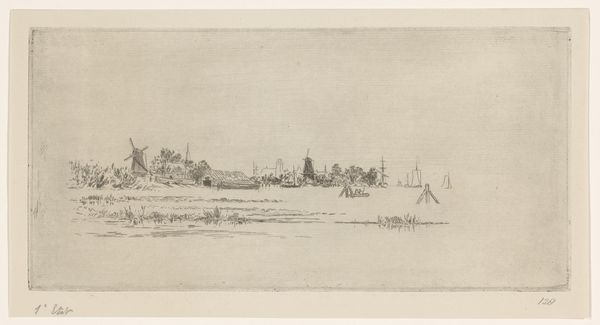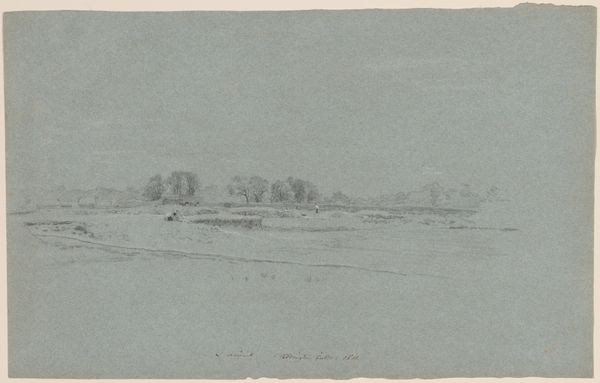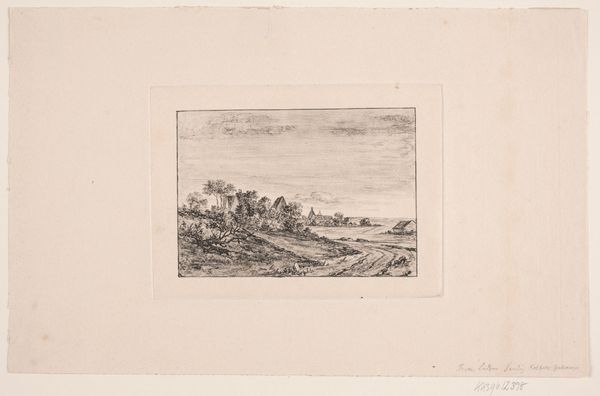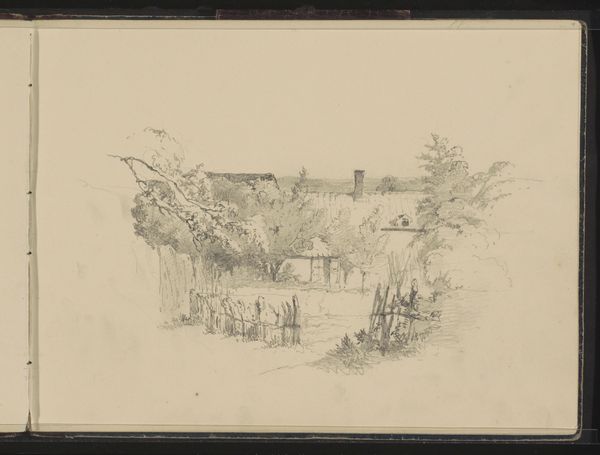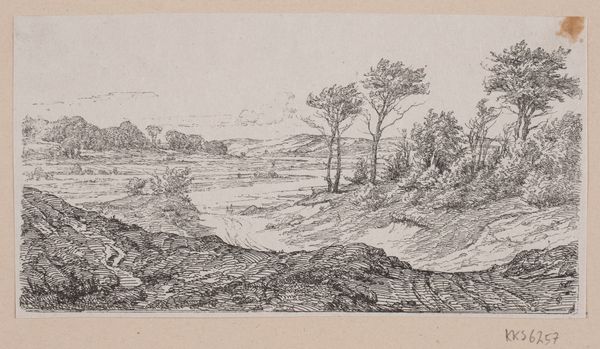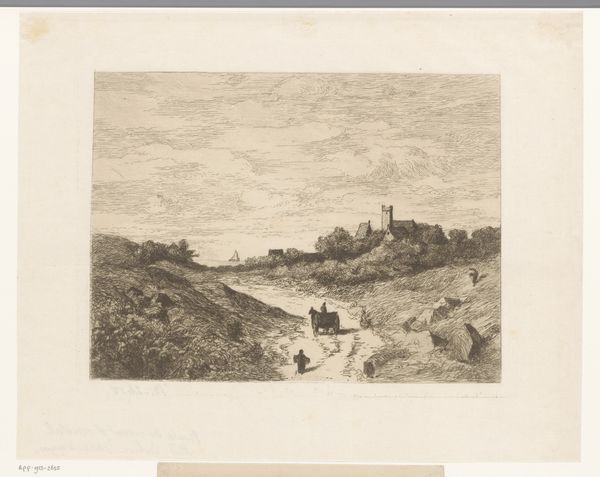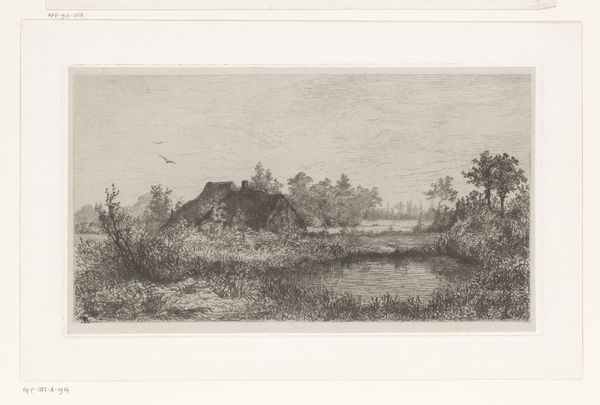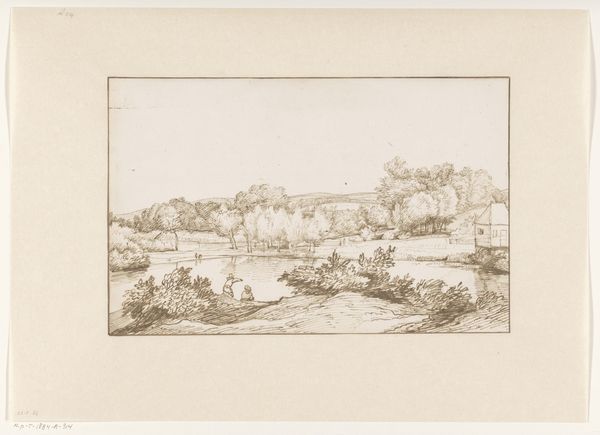
Dimensions: Plate: 6 1/4 × 4 3/4 in. (15.9 × 12.1 cm) Sheet: 8 1/4 × 11 11/16 in. (21 × 29.7 cm)
Copyright: Public Domain
Curator: Looking at this print, a wash of melancholy almost blankets the scene. There's a heaviness, despite its small size and seemingly simple composition. Editor: Indeed. We are observing "Landscape," an etching by Jean-François Millet, created sometime between 1830 and 1875. You find Millet capturing a slice of rural life. Note the humble thatched cottages and figures tending the land near a fence line. Curator: It's all muted, though, isn't it? That's what strikes me. The subdued tonality feels less like reportage and more like a remembered place, faded at the edges. Those cottages seem like archetypes of home rather than literal buildings. The print seems to want to be both genre and Romantic art. Editor: Absolutely. These rural scenes certainly echo archetypes, especially when considering Millet’s interest in symbolism. The recurring image of laborers tilling the land isn’t simply a snapshot of daily life; it speaks to the cyclical nature of existence. Millet, with his social sympathies, might even be reflecting the arduous reality of agricultural labor. Consider the position of the harvesters relative to the sky. They’re positioned so low in the plane they almost disappear to the vast, sweeping nature and landscape above them. Curator: Good point! It also reads a bit like humanity swallowed by a looming, oppressive natural world. It reminds me a little bit of, oddly, some Romantic poetry. A sense of something massive and indifferent… And maybe a commentary on society that demands human toll from those born closest to the land, hmm? It's almost as though the weather will become a physical, insurmountable oppressor in this world and overcome everything this population of workers has labored over for decades. Editor: That's insightful, given Millet’s time. Etchings and prints like these had the capacity to carry social messages but were often packaged as sentimental, "picturesque" views to make them more palatable to a broader audience. In addition to the visual elements in play, the placement of figures in front of the cottages evokes a sense of continuity—of generations linked to this land. These cottages aren’t just architecture; they’re a symbol of roots, belonging, and the persistent human connection to the soil. Curator: I can see that connection too. A story is printed on that horizon line; what do we tell viewers so they are receptive to those signs, now almost two centuries after it was made? It might not be that different from their own longing. Editor: In closing, looking back, I am struck how the small-scale print generates such contemplation about culture, class, and connection.
Comments
No comments
Be the first to comment and join the conversation on the ultimate creative platform.
